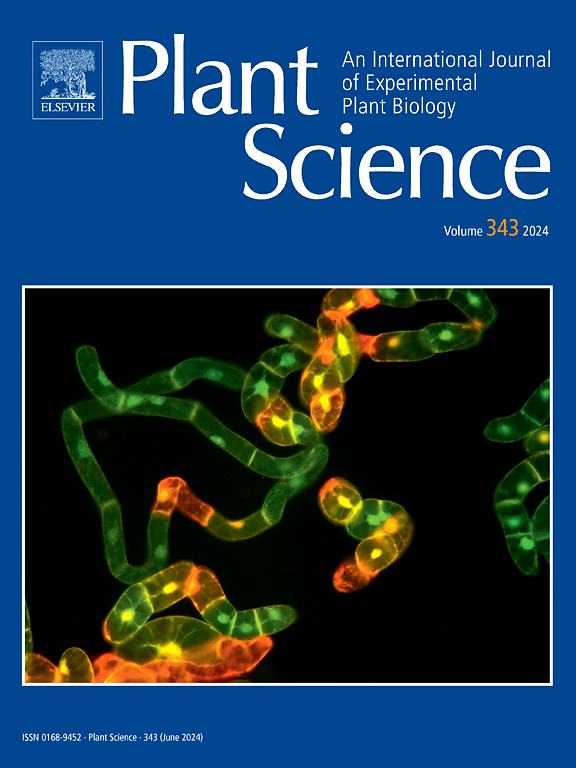VAP27-1 interacts with KCS6 and CER2 to facilitate the biosynthesis of very- long-chain fatty acids
IF 4.2
2区 生物学
Q2 BIOCHEMISTRY & MOLECULAR BIOLOGY
引用次数: 0
Abstract
Cuticular wax is primarily composed of very-long-chain fatty acids (VLCFAs) and their derivatives. It forms a critical hydrophobic layer on plant surfaces, acting as a protective barrier against biotic and abiotic stress. The biosynthesis of VLCFAs and their derivative wax occurs in endoplasmic reticulum (ER) and is subsequently transported to the plant surface. While substantial research has focused on cuticular wax biosynthesis enzymes and their transcriptional regulation, the mechanisms by which these enzymes are modulated by proteins within cytosol organelles remain poorly understood. In this study, we identified that β-ketoacyl-CoA synthase 6 (KCS6), an ER-localized rate-limiting enzyme in VLCFAs biosynthesis, also localized at ER-plasma membrane contact sites (EPCS). We further demonstrated that KCS6 and its cofactor ECERIFERUM 2 (CER2) interact with vesicle-associated membrane protein-associated protein 27–1 (VAP27–1), a key regulator of EPCS formation and stabilization. Overexpression of VAP27–1 in Arabidopsis thaliana resulted in a significant increase in almost all cuticular wax components compared to WT. Additionally, firefly luciferase complementation imaging assays (LCI) and yeast heterologous expression analysis revealed that VAP27–1 strengthens the interaction between the KCS6-CER2 complex, resulting in increased accumulation of VLCFAs. In conclusion, this study emphasized the critical role of VAP27–1 in regulating the biosynthesis of cuticular wax mediated by KCS6-CER2, providing new insights into the fine-tuning mechanisms of cuticular wax biosynthesis within the ER. Furthermore, the identification of VAP27–1 as a novel modulator of VLCFA synthases offers a potential target for enhancing plant resilience to environmental stresses.
求助全文
约1分钟内获得全文
求助全文
来源期刊

Plant Science
生物-生化与分子生物学
CiteScore
9.10
自引率
1.90%
发文量
322
审稿时长
33 days
期刊介绍:
Plant Science will publish in the minimum of time, research manuscripts as well as commissioned reviews and commentaries recommended by its referees in all areas of experimental plant biology with emphasis in the broad areas of genomics, proteomics, biochemistry (including enzymology), physiology, cell biology, development, genetics, functional plant breeding, systems biology and the interaction of plants with the environment.
Manuscripts for full consideration should be written concisely and essentially as a final report. The main criterion for publication is that the manuscript must contain original and significant insights that lead to a better understanding of fundamental plant biology. Papers centering on plant cell culture should be of interest to a wide audience and methods employed result in a substantial improvement over existing established techniques and approaches. Methods papers are welcome only when the technique(s) described is novel or provides a major advancement of established protocols.
 求助内容:
求助内容: 应助结果提醒方式:
应助结果提醒方式:


